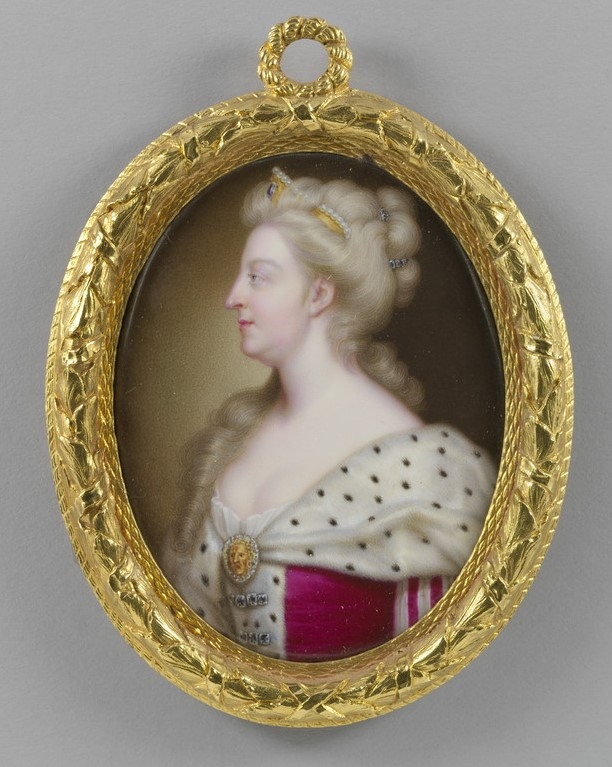You may strut, dapper George, but ’twill all be in vain; We know ’tis Queen Caroline, not you, that reign.
Hervey’s Memoirs of the Reign of George II

Queen Caroline of Ansbach by Christian Friedrich Zincke, RCIN 421820 ©
Widely characterised as the power behind her husband’s throne during her lifetime, it is somewhat surprising to find little evidence of this in the surviving records held in the Royal Archives. Records relating to the Queen Consort comprise no more than a handful, with only her letters to Charlotte Clayton providing occasional glimpses into Caroline’s private and political life. Indeed one of the most personal papers comes after Caroline’s death with a letter from Mary Selwyn, one of the Women of the Bedchamber to Caroline, who in writing to her friend Hannah Lowther records Caroline’s deathbed scene: ‘you that know what it is to feel can best judge what one suffers with a broken heart & a distracted head and how little one is capable of uttering even there sorrow […] when ye stroke came it found me unprepar’d but not her that under went it, she never from her first illness had any hopes of a recovery nor show’d ye least fear of ye pain she endur’d as of ye last closing scene her only concern was for the Kings afflection which is certainly as sencere & in intence as ever human nature sustain’d’.

Letter [in French] from Queen Caroline as Princess of Wales to Mrs Clayton, 13 July 1726, GEO/ADD/28/81 Royal Archives/© Her Majesty Queen Elizabeth II 2019
The remainder of records relating to Caroline are far more prosaic, concerning as they do the management of her household. The Treasurer’s account books detail payments to named office holders for regular service from individuals such as Arthur Onslow, Chancellor and Keeper of the Great Seal, to Bysse Molesworth Esq. cup-bearer (£33 6s 8d) and Susanna Ireland and Mary Haines, necessary women (£56 and £34 respectively). Payments for work done and wares delivered also feature in the accounts, such as William Kent Esq. for pictures (£166 6s), Mr John Rich for plays (£15 15s) and Christopher Cock for books (£115 2s 6d). However, these account books only cover the period 1730 to 1733, just a fraction of Caroline’s time in England.
Earlier account books include payments to Caroline’s household along with that of George, Prince of Wales (EB/EB/18 and EB/EB/48). Many of those mentioned within these account books can also be found in the Wardrobe and Nursery account book for 1730-34 (due for publication in 2018), which contains original bills from various tradesmen and women including the fabulously named Bathsheba Gill, lace woman and Melchior Wagner, hatter.
